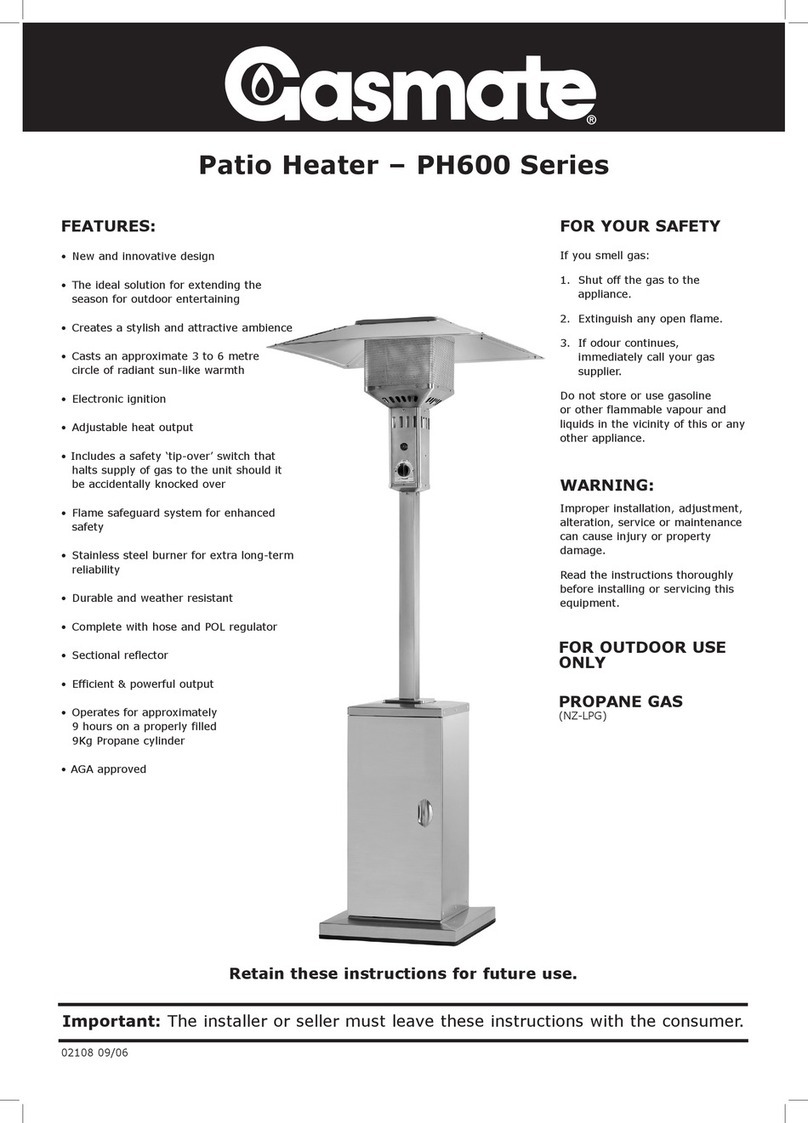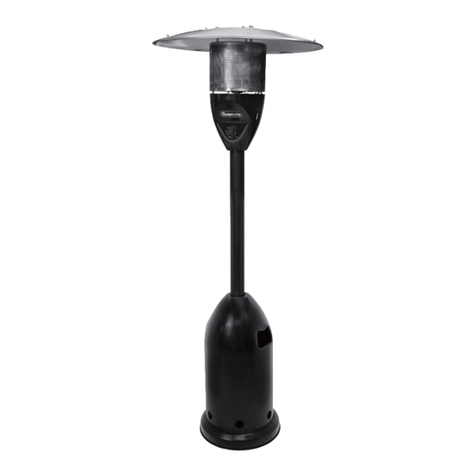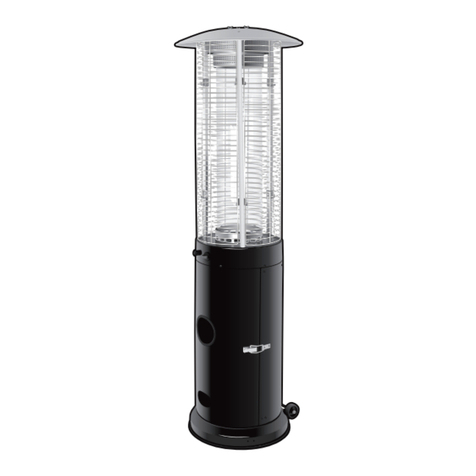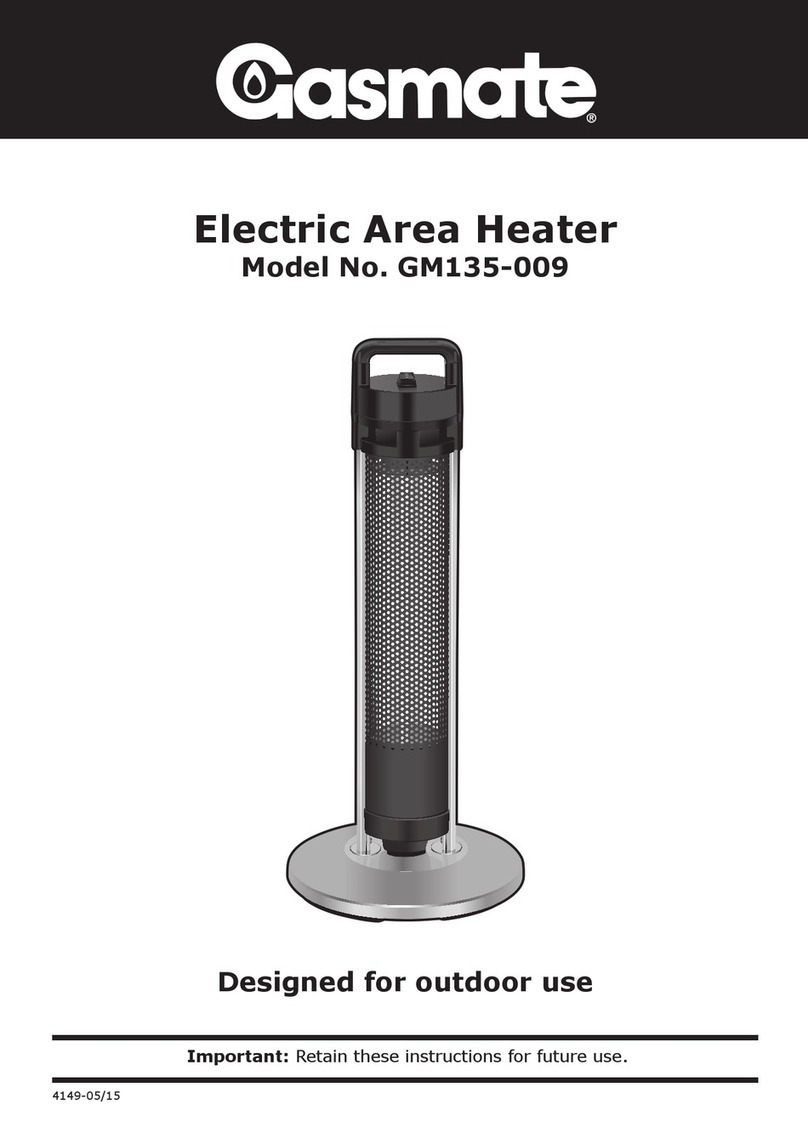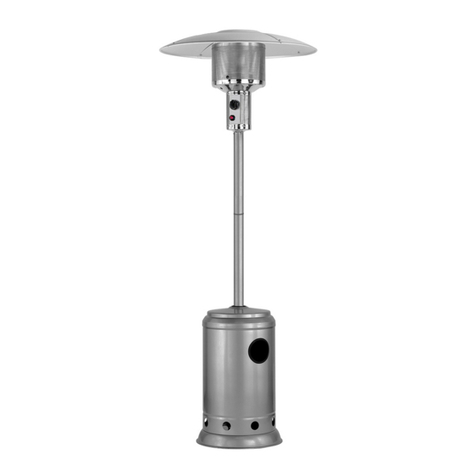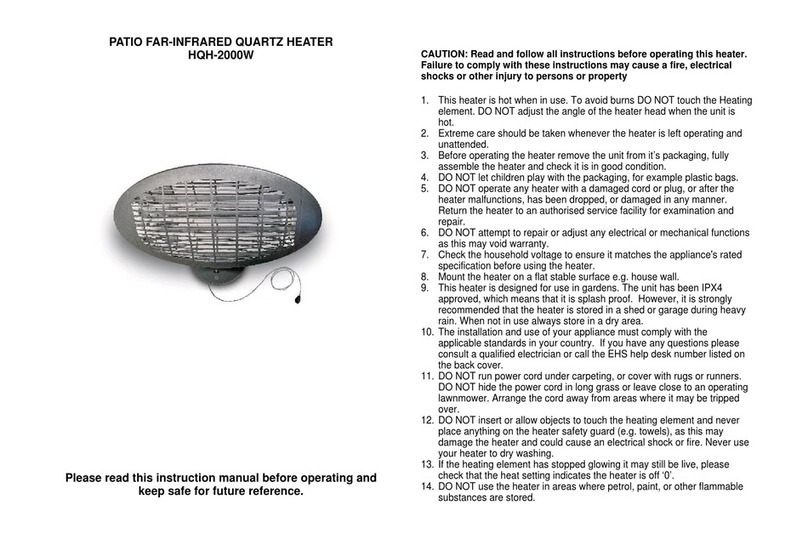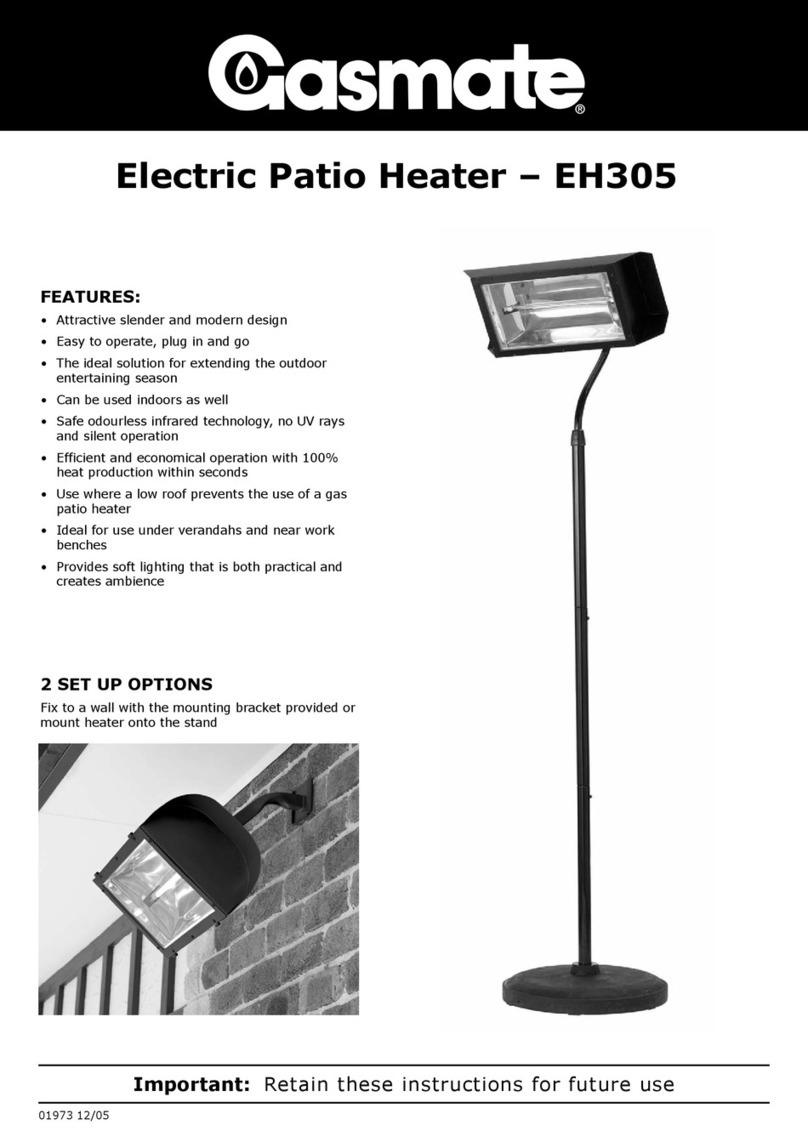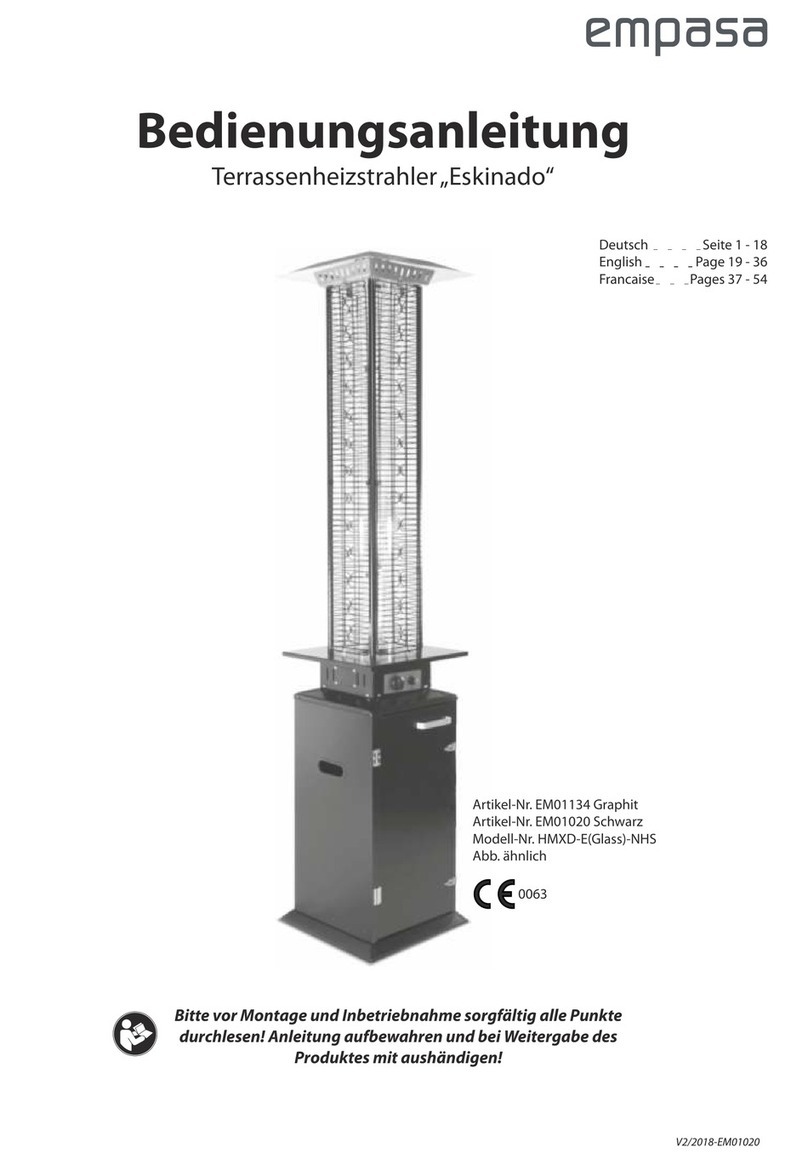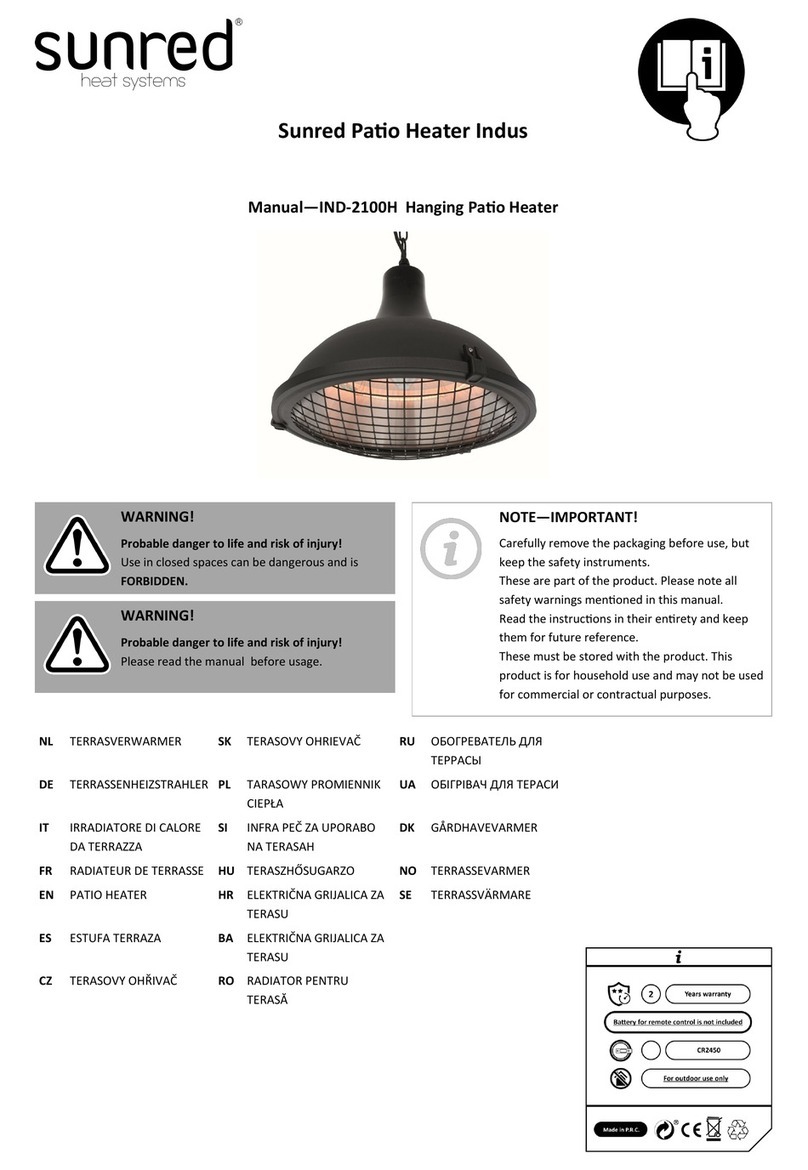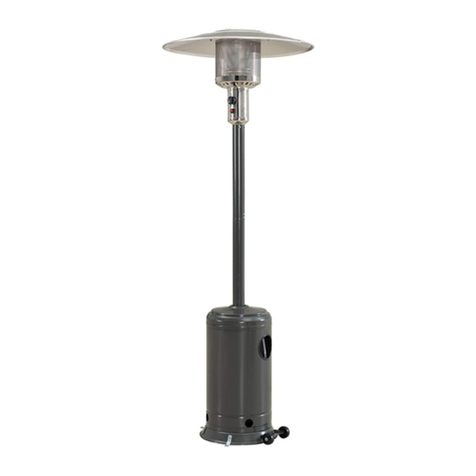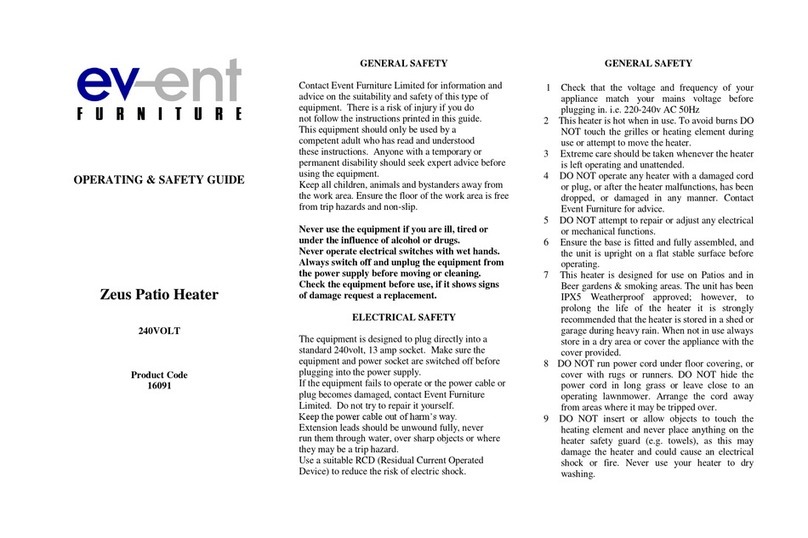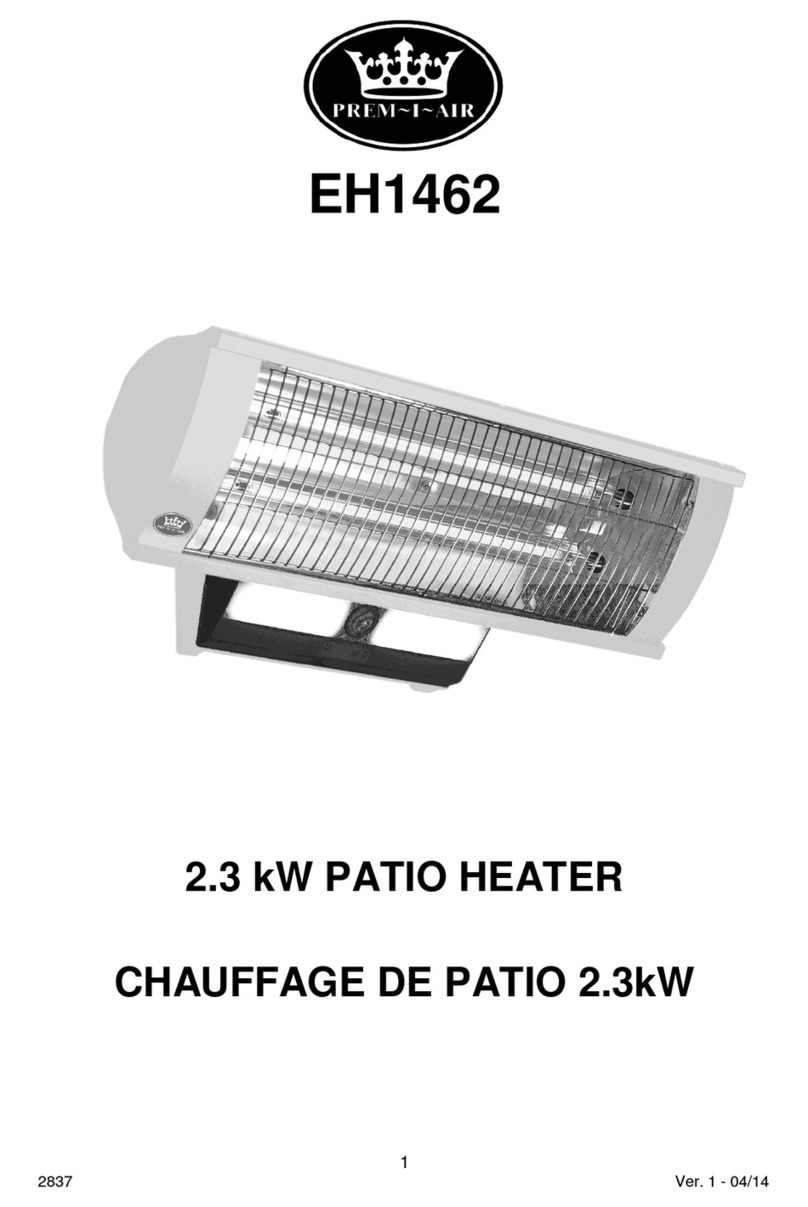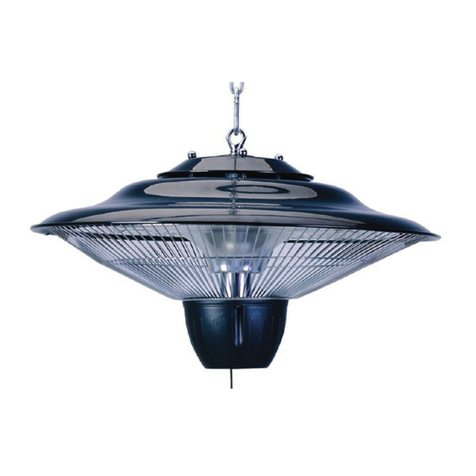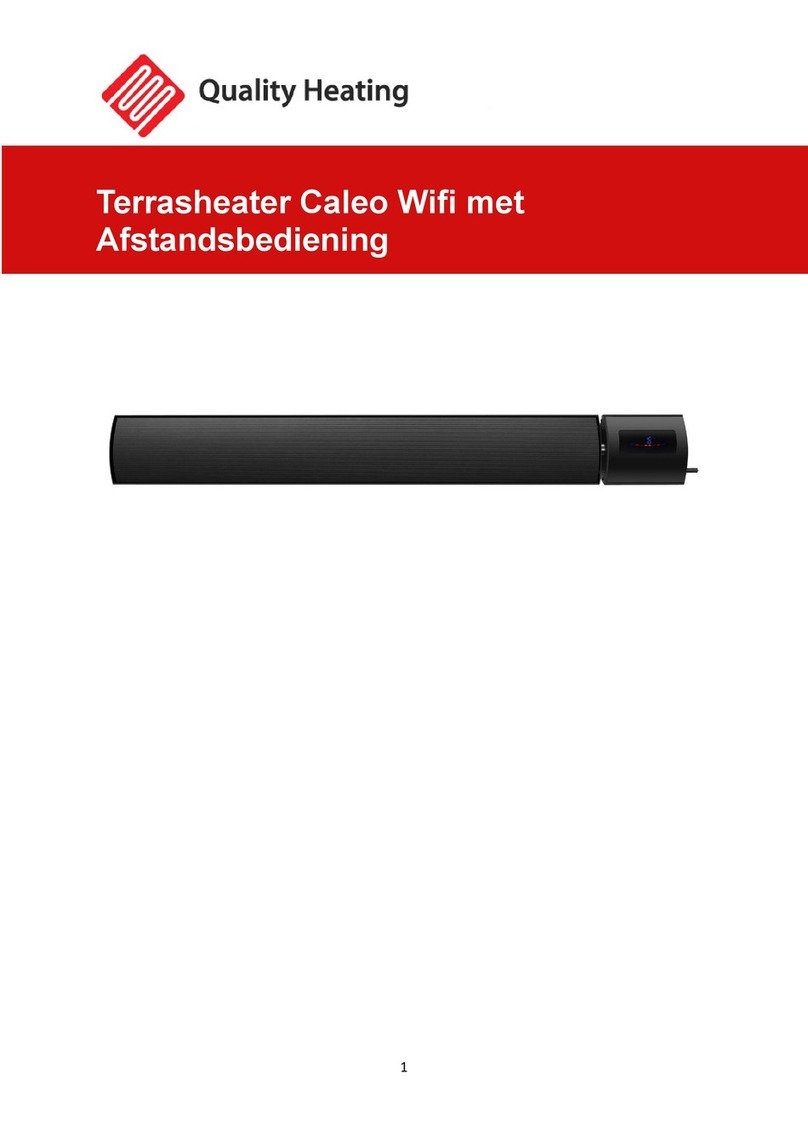Installation, Operation and Maintenance Instructions
Prior to assembling your appliance, the following must be
reviewed. Compliance with the following should result in
satisfactory heater operation. This instruction manual should
be retained for future reference. The installation must
conform with local codes or authority having jurisdiction.
1. The patio heater is intended for heating residential and
non-residential outdoor spaces. The installation must
conform with local codes or, in the absence of local
codes, with the Australian Standard AS 5601.
2. Adequate clearance around air openings into the
combustion chamber, clearances from combustible
materials, provisions for accessibility and for
combustion and ventilating air supply must be
maintained at all times when the appliance is operating.
INSTALLATION
3. Proper clearance from combustible materials must be
maintained at all times. The minimum clearances are
as follows:
Minimum Clearance from Combustibles:
Side 500 mm Rear 500 mm
Ceiling 500 mm Below 1800 mm
Combustible materials are considered to be wood,
compressed paper, plant fibres, plastic, plexiglas or
other materials capable of being ignited and burned.
Such materials shall be considered combustible even
though flame proofed, fire-retardant treated or plastered.
Additional clearance may be required for glass, painted
surfaces and other materials which may be damaged by
radiant or convection heat.
4. Heaters must be placed on a level and adequate footing
and be readily accessible.
5. The gas manifold supply pressure must be regulated
at 2.75 kPa utilising an AGA approved regulator
(supplied with heater).
6. The appliance must be inspected before each use, and
at least annually by a qualified service person.
a. The appliance area must be kept clear and free of
combustible materials, gasoline and other flammable
vapours and liquids.
b. Gas orifices and burner must be kept clear of dirt
and cobwebs. Flow of combustion and ventilation air
through the perforated portions of the heater must
not be obstructed. Cleaning with a soft brush before
use and at least every six months is recommended.
c. All gas connections should be checked for leaks
utilising a soap solution. Never use a flame for this
purpose.
d. The flame pattern at the emitter grid should be
visually checked whenever heater is operated.
If flames extend beyond surface of the emitter grid
or black spot is accumulating on the emitter grid
or reflector, the heater should be turned off
immediately. The heater should not be operated again
until the unit is serviced and or repaired.
e. Any cleaning agent used on the heater should be of a
non-combustible and non-corrosive nature.
f. The stainless steel emitter grid normally does not
require cleaning and should NEVER be painted.
The reflector may be cleaned, but never painted.
Important Safety Rules:
This appliance must only be used in a well ventilated
area.
1. This appliance shall not be installed or used indoors, in
buildings, garages or any other enclosed area.
2. DO NOT place articles on or against this appliance.
3. DO NOT use or store flammable materials near
this appliance.
4. Children and adults should be alerted to the hazards of
high surface temperatures, burns and clothing ignition.
5. Children should be carefully supervised when they
are in the area of the appliance.
6. NEVER hang anything including clothes or other
flammable items on the appliance.
7. DO NOT operate this appliance unless it is fully
assembled with reflector in place.
8. DO NOT SPRAY AEROSOLS IN THE VICINITY
OF THIS APPLIANCE WHILE IT IS IN
OPERATION.
9. Installation and repair should be done by a qualified
service person. The appliance must be inspected
before use and at least annually by a qualified service
person. More frequent cleaning may be required as
necessary. It is imperative that control compartment,
burners and circulating air passages of the heater and
light be kept clean.
2
